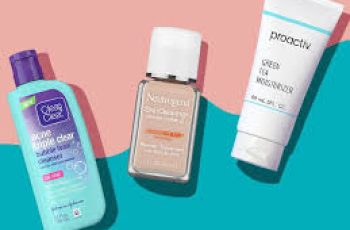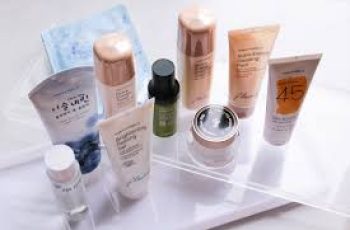
Understanding Uneven Skin Tone: Causes, Treatments, and Best Products for an Even Complexion
Uneven skin tone is a common concern that affects many people across all ages and skin types.
It often manifests as dark spots, patches, or blotchy areas that disrupt the natural uniformity of your complexion.
These irregularities can cause self-consciousness and frustration, especially when they persist despite regular skincare.
In this comprehensive guide, we’ll explore what causes uneven skin tone, the types of pigmentation irregularities like melasma and post-inflammatory hyperpigmentation, and how environmental factors such as sun exposure, blue light, and heat contribute to the problem.
We will also review effective skincare routines and products specifically designed to help even out skin tone and reduce hyperpigmentation.
Finally, we’ll discuss which Baumann Skin Types® are most likely to experience uneven pigmentation and how to tailor treatments accordingly.
What is Uneven Skin Tone?
Uneven skin tone occurs when the pigmentation in your skin becomes irregular or patchy. This may involve the appearance of dark spots, redness, or lighter patches compared to your natural complexion.
Such variations in skin color often result from excess or insufficient melanin, the pigment responsible for your skin’s color.
Common types of uneven skin tone include:
Hyperpigmentation: Darker spots or patches caused by excess melanin.
Hypopigmentation: Lighter spots or patches due to reduced melanin.
Redness and Inflammation: Caused by irritation or underlying skin conditions.
Causes of Uneven Skin Tone
Uneven skin tone can arise from multiple internal and external factors. Understanding the root causes is essential for effective treatment.
1. Sun Exposure
The sun’s ultraviolet (UV) rays stimulate melanocytes, the pigment-producing cells in your skin, causing them to produce more melanin.
This can lead to sunspots (also known as solar lentigines) and uneven dark patches. Even incidental sun exposure during daily activities can accumulate damage over time.
2. Blue Light from Screens
Increasing research shows that blue light emitted by phones, computers, and other digital devices can contribute to pigmentation irregularities.
Blue light penetrates deeper into the skin and may trigger oxidative stress, activating melanocytes to produce excess melanin.
3. Heat Exposure
Heat stimulates melanocytes and can exacerbate conditions like melasma, a common form of hyperpigmentation characterized by brownish patches on the cheeks, forehead, and upper lip.
4. Inflammation and Skin Injury
Inflammatory skin conditions such as eczema, acne, or allergic reactions can leave behind post-inflammatory hyperpigmentation (PIH), where dark spots remain after the inflammation resolves.
This is particularly common in darker skin tones.
5. Hormonal Changes
Pregnancy, birth control pills, and hormone replacement therapy can trigger melasma, sometimes called the “mask of pregnancy,” due to hormonal influence on pigmentation.
6. Skin Conditions and Infections
Conditions such as vitiligo cause hypopigmentation, while fungal or yeast infections may cause either lighter or darker patches on the skin.
7. Allergies and Sensitivities
Skin allergies or phytophotodermatitis (a reaction to plant chemicals plus sun exposure) can lead to uneven pigmentation.
How to Address Uneven Skin Tone: Treatment Options
Step 1: Identify the Type of Pigmentation
The first step in treating uneven skin tone is to determine whether you are dealing primarily with dark spots, light spots, or a combination of both. This will guide your treatment approach.
For dark spots: Treatments focus on reducing melanin production and promoting the fading of existing pigmentation.
For light spots: These can be harder to treat; sometimes concealing them with makeup or consulting a dermatologist is advisable.
Step 2: Prevent Further Pigmentation
Preventing new dark spots is critical. This means:
Daily Sun Protection: Use broad-spectrum sunscreens with SPF 30 or higher, ideally tinted to protect against visible light, including blue light.
Avoid Excessive Heat: Limit exposure to saunas, hot yoga, or other sources of intense heat.
Manage Inflammation: Reduce skin irritation by using gentle skincare products and avoiding harsh treatments.
Avoid Hormonal Triggers: If possible, consult your doctor about estrogen supplements or contraceptives that may worsen pigmentation.
Step 3: Incorporate Targeted Skincare Products
Products designed to even skin tone typically work by inhibiting melanin production, promoting skin cell turnover, or blocking pigment transfer. Common categories include:
Tyrosinase Inhibitors
Tyrosinase is an enzyme crucial to melanin production. Inhibiting this enzyme helps reduce pigmentation. Popular ingredients:
Hydroquinone: Prescription-strength skin lightener.
Kojic Acid: A natural tyrosinase inhibitor.
Arbutin: A gentler alternative derived from bearberry plants.
Vitamin C: An antioxidant that also inhibits tyrosinase.
Azelaic Acid: Helps reduce pigmentation and is anti-inflammatory.
PAR-2 Blockers
Protease-activated receptor 2 (PAR-2) blockers reduce the transfer of pigment from melanocytes to skin cells. Ingredients like niacinamide fall into this category.
Chemical Peels and Exfoliants
Chemical peels containing alpha-hydroxy acids (AHAs) or beta-hydroxy acids (BHAs) help remove pigmented dead skin cells and stimulate cell renewal.
Moisturizers and Barrier Repair
Healthy skin barrier function reduces inflammation and irritation, both of which contribute to pigmentation. Look for moisturizers with ceramides, glycerin, or hyaluronic acid.
Tinted Sunscreens
Tinted sunscreens contain iron oxides that protect against visible light, including blue light from screens, which can worsen pigmentation.
Dietary Supplements
Some supplements like glutathione and polypodium leucotomos extract may support skin lightening and protect against oxidative stress.
Recommended Skincare Routine for Even Skin Tone
A consistent skincare routine is essential for results. A general outline includes:
Morning:
Gentle cleanser
Antioxidant serum (e.g., vitamin C)
Moisturizer
Broad-spectrum tinted sunscreen (SPF 30+)
Evening:
Cleanser
Targeted treatment (e.g., retinoids, azelaic acid)
Moisturizer
Note: Retinoids are highly effective for promoting cell turnover and fading pigmentation but may initially cause irritation. Introduce them slowly.
How Long Does It Take to See Results?
Treating uneven skin tone takes patience. Improvements can take 8 to 16 weeks or longer to appear. Consistency with your routine and sun protection is vital.
If there is no improvement after four months, consult a dermatologist to re-evaluate your treatment plan.
Why Professional Guidance Is Important
While many products are available over-the-counter, severe or persistent pigmentation often requires prescription treatments or in-office procedures like chemical peels, laser therapy, or microneedling.
However, these should be approached cautiously, as some can worsen pigmentation if not done correctly.
Baumann Skin Types® and Uneven Skin Tone
The Baumann Skin Typing System® classifies skin into 16 types based on four parameters, one of which involves pigmentary concerns.
There are eight skin types within this system prone to uneven skin tone, often called pigmented Baumann Skin Types.
These types benefit from skincare products specifically designed to regulate pigmentation rather than focusing solely on skin color or ethnicity.
This distinction is important because uneven skin tone can affect anyone, regardless of race or Fitzpatrick skin type.
Treatment should be personalized to your Baumann skin type and underlying causes of pigmentation.
Summary and Key Takeaways
Uneven skin tone results from irregular melanin distribution, inflammation, sun exposure, hormonal changes, and environmental factors like blue light and heat.
Dark spots can be treated by targeting melanin production with ingredients like hydroquinone, kojic acid, vitamin C, and azelaic acid.
Preventing new pigmentation with sun protection, avoiding heat, and managing inflammation is crucial.
Consistent use of appropriate skincare products and sunscreen for at least 8-16 weeks is necessary for visible improvement.
In stubborn or severe cases, professional dermatological treatments may be required.
The Baumann Skin Typing System helps tailor treatments to your skin’s unique pigmentation needs.
If you struggle with uneven skin tone or hyperpigmentation, the best approach combines prevention, targeted skincare, and professional advice.
By understanding your skin and choosing the right products, you can achieve a more even, radiant complexion over time.


